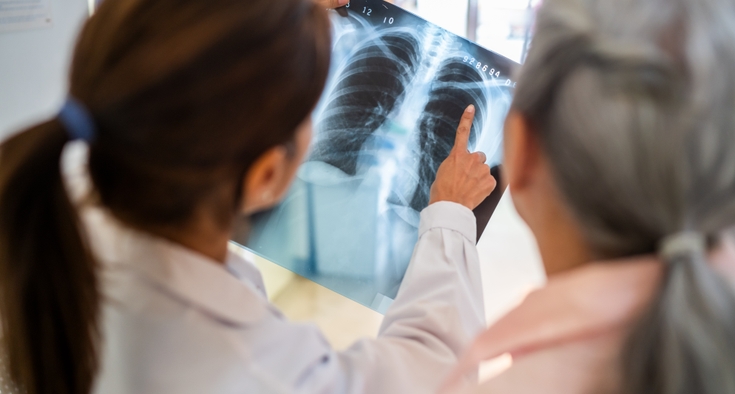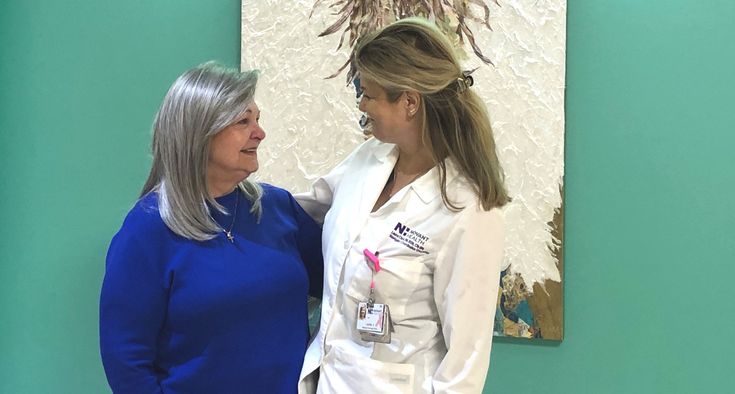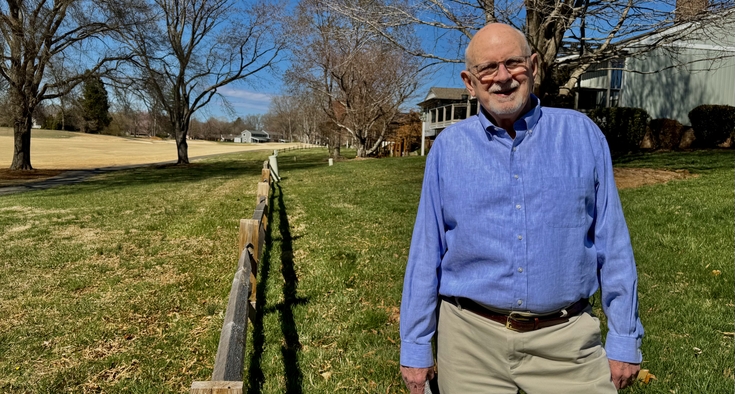Smoking kills about 14,000 people in North Carolina every year, more than double the capacity of Legion Stadium in Wilmington.
And even though smoking has declined in the United States during the last several decades, many smokers have traded one habit for another. Between 2017 and 2023, about 7 million people quit cigarettes while another 7 million took up e-cigarettes (vaping), according to the Centers for Disease Control and Prevention.
Lung cancer is the leading cause of cancer death in the U.S., accounting for about 1 in 5 of all cancer deaths. Each year, more people die of lung cancer than of colon, breast, and prostate cancers combined.

Age and smoking history determine someone’s risk of developing lung cancer, said radiation oncologist Dr. Tiffany Morgan of Novant Health Cancer Institute Radiation Oncology - Wilmington. But few people whose age and smoking history qualify them for a lung cancer screening are following through.
Nationwide, only 16% of eligible people were screened in 2022. This may be because of stigma and blame attribution surrounding lung cancer, several studies show. But lung cancer screenings are typically quick and easy, and the best way to detect cancer at an early, more treatable stage.
“Many people come to a screening not knowing what to expect,” Morgan said. “But once they understand how easy the process is, they typically leave feeling relieved.”
Visit a primary care physician to learn if you are eligible for lung cancer screening.
Who’s eligible for a lung cancer screening?
Current and former smokers (who have quit within the past 15 years) aged 50 to 80 who have a 20 pack-year smoking history should be screened.
The rule of thumb for a pack-year: Multiply the number of packs you smoke per day by the number of years smoked. For example, smoking a pack a day for 20 years, or two packs a day for 10 years, equals 20 pack-years.
The U.S. Preventive Services Task Force (USPSTF) urges both current and former smokers to get screened for lung cancer once a year. USPSTF expanded its guidelines in 2021 to include younger patients, specifically Black men and women, who can develop cancer earlier and have the highest mortality rate for tobacco-related cancers.
Morgan also refers to the National Comprehensive Cancer Network guidelines, which do not provide an age cutoff for screenings.
“We tell our patients older than 80 that if they were diagnosed with lung cancer and would choose to treat it, they should be screened even though they have aged out of the USPSTF criteria,” Morgan said.
What’s involved with lung cancer screening?
A low-dose computed tomography (CT) scan uses a low dose of radiation to detect tumors. The scan involves no IVs or drinking dyes and takes only a few minutes with results often provided the same day.
If the CT scan finds a lung nodule, the patient’s physician makes recommendations based on the size of the nodule and patient’s risk for developing lung cancer. If the screening CT reveals a nodule larger than 8 millimeters, the next step typically involves a PET scan.
This scan uses a sugar-like substance to illuminate cancer cells. A positive PET scan would require a biopsy to confirm either a cancer or a benign (noncancerous) lesion.
Lung cancer can be asymptomatic (free of symptoms) even at an advanced stage, which is why screening is so important. When people wait until they experience symptoms, about 75% may already have advanced disease that may not be curable.
Should former tobacco smokers be screened for lung cancer?
Yes. For example, a 50-year-old with a 20 pack-year history should be screened if they have quit smoking anytime since their 35th birthday.
I’ve been smoking my whole life. Why quit now?
Because it’s never too late, Morgan said, no matter how old you are.
“I tell my newly diagnosed patients that stopping smoking is the best thing they can do for their health and something they have control over,” she said. “Patients who continue to smoke have higher risks of recurrence after treatment.”
It is unclear to what extent this includes vaping, which also contains nicotine and cancer-causing chemicals. While smoking cessation methods include quit hotlines, psychotherapy and medications, e-cigarettes (vapes) are not approved by the Food and Drug Administration as a safe way to help people quit smoking.
And though there is not yet sufficient data on the long-term effects of vaping, Morgan has seen young users diagnosed with what’s known as e-cigarette or vaping use-associated lung injury (EVALI).
Ultimately, catching lung cancer early means advocating for yourself. If you meet the criteria for screening, be proactive and talk to your primary care doctor, who can help you assess your risk and order the scan.












